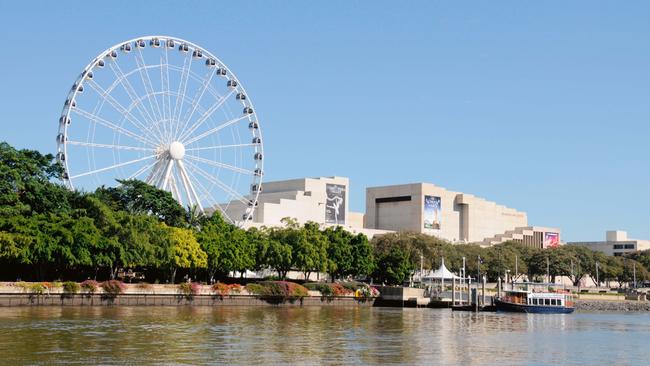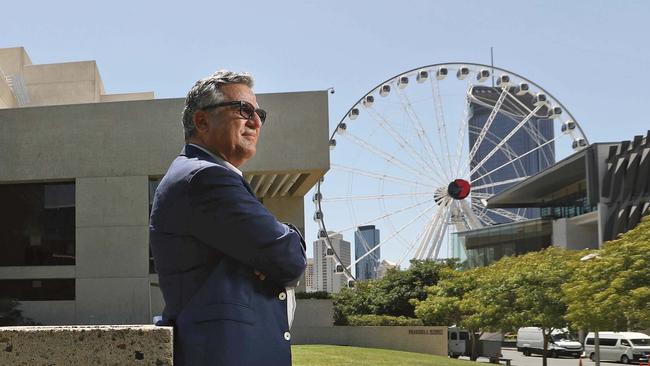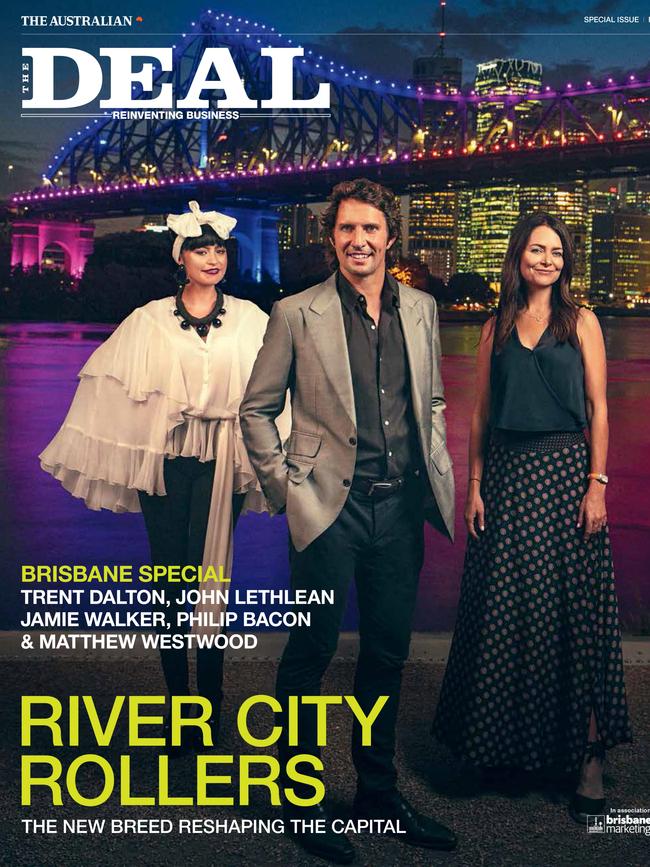Boom time on Brisbane’s South Bank
It hasn’t always been Brisbane’s crown jewel, but it is now.

The southern bank of the Brisbane River has been many things to many people. For millennia, it was a meeting place for the region’s indigenous people, the Turrbal, before becoming a bustling port and industrial area and then the site of the city’s coming of age with the 1988 World Expo.
Thirty years later, South Bank is the cultural hub of Brisbane with a university, museum, state library, science centre, parklands, convention centre and some of Australia’s most popular galleries and performing arts theatres.
More than 14 million people visit the 42ha precinct each year, drawn by the exclusive shows hosted by the Queensland Performing Arts Centre, and the Queensland Art Gallery & Gallery of Modern Art.
In the past few years QPAC has lured Italy’s Teatro alla Scala Ballet for its first Australian visit, as well as the Royal Ballet, while QAGOMA has scored hits with a series of exclusive exhibitions. QPAC stages more than 1500 local and international shows each year and is about to host Russia’s Bolshoi Ballet.
QPAC chief executive John Kotzas says the mix of touring shows and home-grown performances of Queensland’s ballet, symphony orchestra, opera and theatre companies has pushed annual ticket sales above 1.5 million. “We are the state’s premier performing arts centre and we see ourselves as the hub for performing arts for the whole state,” Kotzas says. “Between 34 and 37 per cent of all our attendances come from outside of Brisbane which shows people travel if you offer a fantastic experience. If they come for a weekend, they don’t just come to see a show. They can take their kids to the science centre, go to the library – there is a lot on offer here.”
QAGOMA, which opened in 2006, offers a diverse program of curated exhibitions. The galleries house several indigenous and contemporary Australian art collections and the complex is hosting a Japanese collection called A Fleeting Bloom. In 2017, GOMA broke records with its Marvel: Creating the Cinematic Universe exhibition, pulling in almost 270,000 visitors over 99 days.
Now a bustling and social city escape – it generated $906 million for Queensland last financial year – South Bank has a history of booms and busts. In its 1930s prime, the port and industrial zone was a mini-city with thriving markets, wharves, dance halls and theatres drawing visitors from across Brisbane and beyond. But as activity slowed and people stayed away, the area fell apart. By the early 1980s, it was a place to avoid.
It was the government of Joh Bjelke-Petersen that proved to be South Bank’s saviour. When Brisbane was selected to host the 1988 World Expo, the state purchased and developed the derelict land to host the six-month cultural event.
Cameron Dick, Queensland’s Minister for State Development, Manufacturing, Infrastructure and Planning, still marvels at South Bank’s reinvigoration. “I remember when it was a working industrial area and I saw first-hand the transformation of South Bank,” he says. “When I was a university student, I was a ticket seller at World Expo 88. I still have very strong and fond memories about what World Expo 88 meant to me, to my family and to the broader community. Even though it is a cliche, it is true – it was a coming of age for Brisbane and Queensland.”
After Expo’s success, the government decided South Bank would remain as public space and two years later, the South Bank Corporation was established to oversee the redevelopment of the precinct. The corporation was designed to operate independently of government and council and create a space that was cultural, educational and recreational.
Gold Coast-based architect and designer Desmond Brooks, a key thinker in the early design stages of the precinct’s development, competed against five local and international firms for the tender. He recalls picking up a popular architectural magazine after his pitch and discovering that it was damning his proposal to link South Bank to the emerging Dockside precinct with a bridge.
“On the cover of the next month’s magazine was this ugly big monster with its toenails digging into Dockside, with hands reaching over to grab South Bank,” he says. “This great big monster was wearing a red bowtie, which was my logo! You couldn’t believe it, the animosity towards me. But anyway, we won and the people love it.”
One of the precinct’s most loved and distinguishable features is a 2000 square metre concrete lagoon surrounded by 4000 cubic metres of sand shipped in from Moreton Bay.
In November last year, the Queensland government announced a new master plan would be developed to “future proof” the area. South Bank Corporation CEO Bill Delves does not apologise for thinking big. “We have a very clear vision to be the most vibrant, booming cultural precinct in the world,” he says. “That’s not a low benchmark by any stretch of the imagination. It’s a statement we are not afraid of.”
Theatre of tomorrow
Hi-tech venue’s time has come

It took only 30 years for the new theatre at the Queensland Performing Arts Centre to be built, but the timing is perfect. The high-tech venue, which was always part of the original plan, will seat around 1700 patrons and have the facilities to broadcast around the state, offering Queensland theatre lovers a totally new experience.
The yet-to-be-named performing arts venue will have a capacity between that of QPAC’s existing spaces – the 856-seat Playhouse Theatre and the 2000-capacity Lyric Theatre.
Audiences at the state’s premier performing arts venue have been steadily growing for the past couple of years and QPAC chief executive John Kotzas (pictured below) believes the time is right to expand. “All the indicators are right,” he says. “The audiences are ready for it, the companies are ready for it, we as an organisation are ready for it.”
Technology will play an important role in the theatre’s operations, from staging to broadcasting, and Kotzas believes it will be the most advanced performing arts space in country. “The other big thing this theatre will be ready to do – it’s going to have the technology and the digital capacity that will potentially be able to broadcast every performance. That will enhance every home company with the rights to deliver digitally. It also gives us the opportunity as an organisation to build more work where we have the copyright and to get it out there.”
The hope is that the new facility will encourage local producers to create Australian stories that QPAC can broadcast around the state and reach people who would otherwise not be able to see a show.
Several international, national and local firms have been shortlisted to create five designs. They include Cox Architecture, Richard Kirk Architects and Wilson Architects. An expert panel is due to announce the principal design consultant and concept design later this year.
The Queensland government is backing the project. When it was announced last year, Deputy Premier Jackie Trad said the theatre would complement the city’s cultural hub and make QPAC “bigger and better”.
One interesting consideration QPAC faces is what it intends to do with the heritage-listed infrastructure elements currently on the site.



